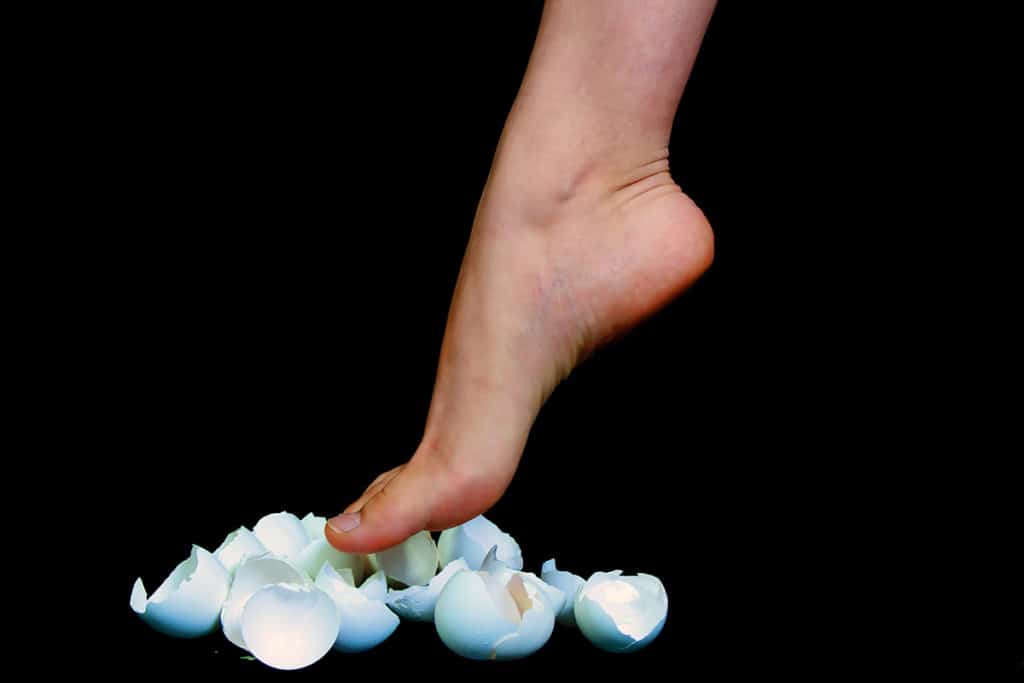Your metaphors for stress and conflict tell you – and everyone else – all you need to know about your emotions. With LDT™, you can put your best foot forward.
“When day comes, we ask ourselves:
Where can we find light
In this never-ending shade?
The loss we carry, a sea we must wade.
We’ve braved the belly of the beast.
We’ve learned that quiet isn’t always peace,
And the norms and notions of what ‘just is’
Isn’t always justice.”
Monsters, Beasts, and Finding Light In The Shadows
In 1895, 24-year-old Stephen Crane wrote a story so true-to-life about the emotions of a youth in the American Civil War that it has been described as “a great parable of the inner battle which every [person] must fight” (Monteiro, 2009, Wikipedia). I referenced The Red Badge of Courage where you learned to Locate your emotions in your body.
In 2021, 22-year-old Amanda Gorman wrote a poem so captivating and hopeful about “a nation that isn’t broken, but simply unfinished,” that Oprah Winfrey wrote in the book’s foreword:
Both of these young Americans referenced times of stress and conflict in their country; both connected with us, and changed us, through the power of metaphor.
What On Earth Is A Metaphor, and What Does It Have To Do With Transforming Stress or Conflict?!
The introduction to LDT™ – Locate, Describe, & Transform – championed metaphor as your friend. And while you may not speak as eloquently as a novelist or poet (I certainly don’t!), you do naturally describe your emotions with metaphor.
This isn’t an English lesson, so I won’t get into defining metaphor, or separating it from simile or other figures of speech. I keep it simple and group it all under metaphor, because you only need to focus on the emotions your words and images bring forth, not the definitions expected in a classroom.
Let’s look at some of the very relatable examples used by Crane and Gorman to get you started. While you are not in class, give this a try as you contemplate the lists:
- Keeping in mind the previous article, can you locate the metaphors in your own body?
- Do you relate to some of the metaphors more than others?
- Does a particular incident or memory come to you where you might use one of these metaphors?
- Can you describe the incident or memory as an image or scene, including smells, tastes, sounds, or textures?
Losing Your Legs As The Monster Approaches
Crane’s words highlight the confusion, stress, fear, anxiety, and even hate, of a teen who volunteered to fight in a war. Can you feel the heaviness of the emotions? Do you get a good picture of what this youth is feeling?
- wrestle with a question or problem
- run like the devil
- bowed down by the weight of a great problem
- ran like a rabbit
- drained him of his fire
- tossed by many emotions
- his legs quaked
- his mind shrank from going nearer to the danger
- eyes burning hatefully
- this spectacle seemed to paralyze them
- spirits worn by the turmoil
Braving the Belly of the Beast
Gorman does not shy away from the trauma and distress felt by many Americans (and the world) in the previous four years, but her words highlight the survival rather than the fight. Do you feel the weight lift ever so slightly from Crane’s metaphors?
- we’ve weathered and witnessed
- yes, we are far from polished, far from pristine
- the hill we climb
- a country that is bruised but whole
- we will raise this wounded world
- we’ll emerge, battered but beautiful
Finding the Light
Finally, Amanda Gorman uses metaphor to lift us out of the stress and negative emotions that dominated the recent past. She wants to help us be the best version of ourselves; rather than abandoning us to our own devices, she uses positive metaphors to inspire us.
Can you feel your body lighten with her words? Can you feel yourself wanting to charge forward with positive purpose?
- we lift our gazes
- we close the divide
- we lay down our arms so that we can reach our arms out to one another
- we seek harmony for all
- victory will lie in all the bridges we’ve made
- we’ve found the power to author a new chapter
- we will rise
- we step out of the shade
LDT™: Describe Your Embodied Emotions
With LDT™, you have the formula to take yourself from lost legs and monsters, through bruised and wounded bravery, and into the light. More than just a common sense approach to transforming stress and conflict, LDT™ is supported by research in psychology, language, and conflict resolution:
It's Not Just In Your Head
In chapter one of Healing Images: The Role of Imagination and Health, Sheikh, Kunzendorf, and Sheikh examined the research on the use of imagery (ie: metaphor) to heal. They found that imagery works as a transformation tool because:
- your body can’t tell the difference between an actual experience and one that is imagined
- your descriptions take you out of a linear world, and are therefore more accurate
- you can feel a greater range of emotions
- imagery creates a range of physiological changes
- you can access significant childhood memories that occurred prior to you having language skills
- you have a better likelihood of bypassing your conscious filter
In a long-term study of patients with various illnesses, psychotherapist Brian Broom found “the language used in the stories given by the patients is uncannily relevant to the illness presentations, and has clear metaphorical or symbolic status.” In other words, Broom’s research could link the images and metaphors of his patient’s verbal life-histories with the stories their bodies told (ie: their illnesses).
Conflict Specialists Weigh In
LDT™ and the use of metaphors is also supported within the field of conflict resolution. Early researchers in the field weighed in:
- Conflict transformation pioneer John Paul Lederach noted that “part of creating the big picture is identifying and analyzing our guiding metaphors”
- In her book Bridging Troubled Waters, conflict transformation scholar Michelle LeBaron spoke of your ability to “shapeshift” via your metaphors
- Peace researcher Malvern Lumsden situated metaphor within zone 3 of a three- zone model:
- zone 1 is the outside world
- zone 2 is the inner world of humans
- zone 3 is the “transitional zone between the personal/psychological and the social/structural”
- in zone 3, you can “reconstruct conflictual material from your inner world in a metaphorical or transitional space”
Caveat
So yes, you naturally use metaphors and imagery to describe your emotions. And yes, you can successfully transform your world by focusing on your metaphors. However, Elise Boulding, a founder of Peace and Conflict Studies, pointed to a hurdle you may need to overcome:
For many, this capacity lays dormant, awaiting re-awakening. Is it worth the effort to learn the skill? More than 23 years ago, physician Kim Jobst and two of his peers wrote an article arguing that it most certainly is:
LDT™ – Locate, Describe, & Transform – offers you a simple pathway over your hurdles.
Give It A Try!
You are probably familiar with the phrase walking on eggshells. If so, you intuitively understand the situation to be stressful and potentially messy, but not fatal.
Your approach is gentle so as not to crush the eggshells; that is, you do not want to make things worse.
Let’s put an image to the phrase:

I imagine a bare foot, toes pointed down and preparing to step on a group of eggshells, each shell broken in half, with some sharp edges facing up; you may have a very different scene come to mind. This is important because your scene is what reflects your emotions, and is the focal point of all of your transformations to come.
Both the phrase walking on eggshells, and the scene you picture, could remind you of a situation where you felt the same caution and stress. If so, you have likely already had an uncontrollable response, some of which you are aware of, and can locate in your body. These are the reactions you will want to Locate, Describe, & Transform™.
Let’s exacerbate the situation. If you describe a stress or conflict as akin to walking on broken glass, your listener will immediately identify the situation as more intense than the eggshells metaphor.
They may not, however, know exactly how extreme it is for you:
- Are you walking on thousands of pieces of tiny tempered glass, uncomfortable but with no fear of physical harm?
- Are you wearing shoes?
or…

Ouch!
This bare foot is about to step on large, sharp shards of glass. It seems a vase has broken into pieces, and been swept into a pile on the wood floor. The person’s tender instep is fully exposed, and the base of their big toe is about to land on a particularly large, pointed piece.
With such a powerful scene, you are probably having your own immediate physical reaction: an emotion.
- You can imagine the pain and harm, even if you have never experienced the specific situation the metaphor is meant to represent.
- You may be curling your toes, or reflexively withdrawing your foot.
- Your face may be scrunched up, your body may be tensing, and your heart may be racing.
This is the power of metaphor to describe your emotions.
In the next article, you will take the third and final step, and transform the glass.



